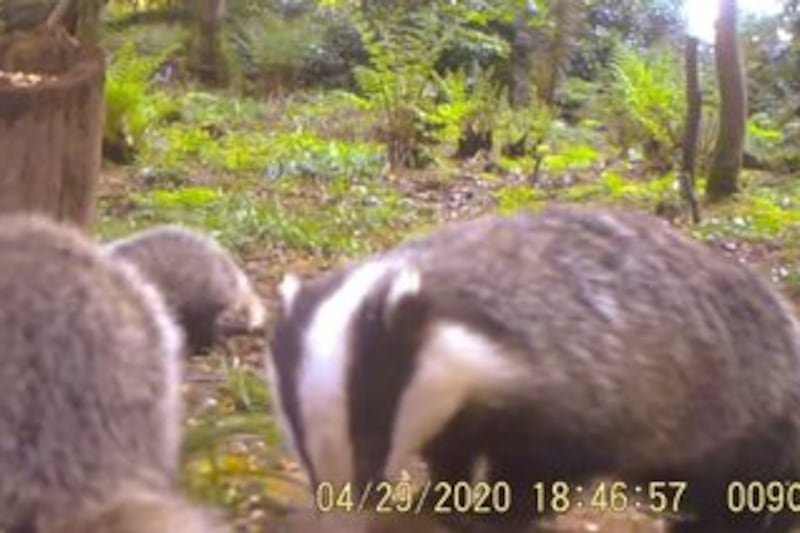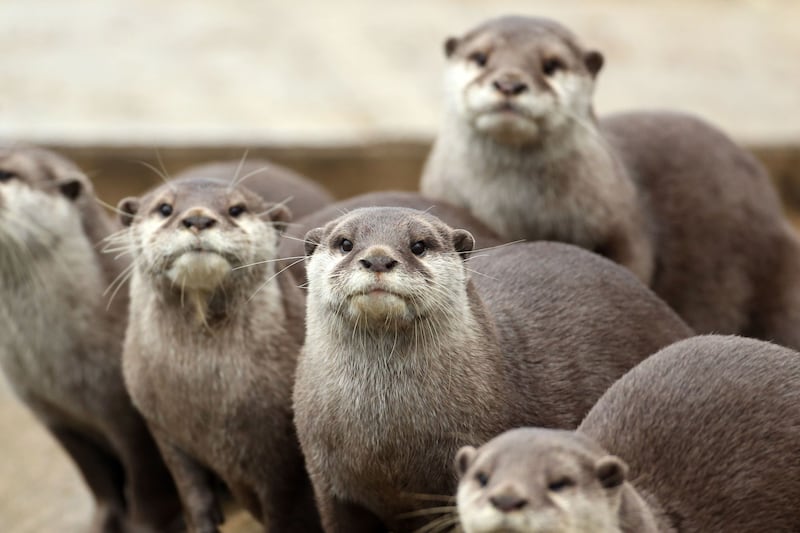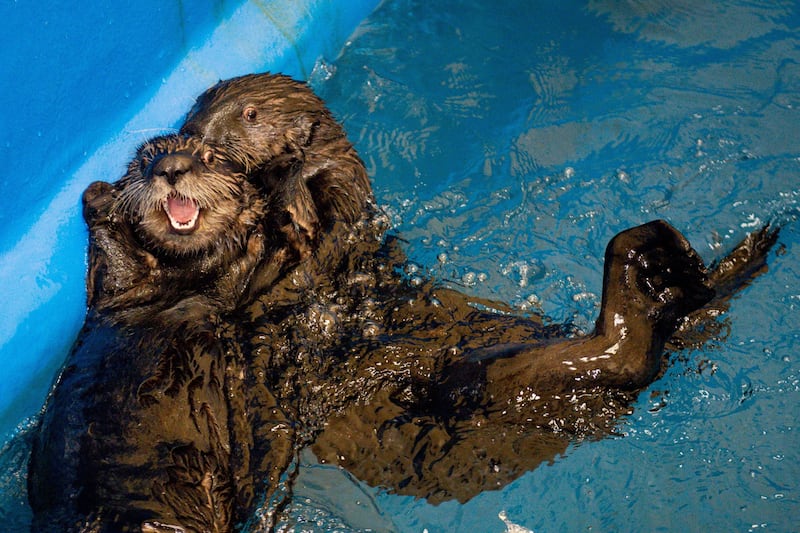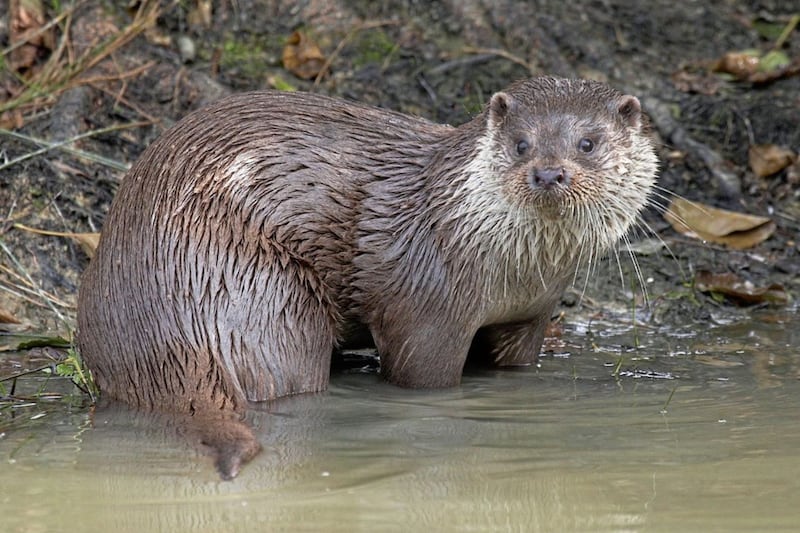Listening to the long running Mooney Goes Wild on RTÉ Radio 1, two weeks ago, I enjoyed hearing about one of Ireland’s most graceful but elusive mammals, the otter. A discussion on its presence along the banks of the River Lee in Cork city brought back memories of seeing this shy and secretive creature closer to home in counties Tyrone, Fermanagh, and Sligo. The Eurasian otter, its proper name, is the largest of our mustelid family, which includes the badger, pine marten, stoat, and mink, all sharing the characteristic elongated bodies, short legs and small skulls. Lutra lutra is found across Ireland with Hayden and Harrington writing in Exploring Irish Mammals (2000), ‘This country holds the densest population of otters in Western Europe’, having avoided the declines recorded in many other places through the decades.
The separation of Ireland from Britain, through rising sea levels at the end of the last Ice Age, some 10,000 years ago didn’t prevent such a powerful swimmer as the otter from arriving here and becoming part of Ireland’s native fauna, so it is believed the animal has been present here at least since that period. With the arrival of man to our shores, the otter like other wild animals then, was hunted for meat and its pelt. Evidence of this comes from excavations revealing otter remains in dumps of domestic waste known as ‘middens’, showing what our ancestors ate.
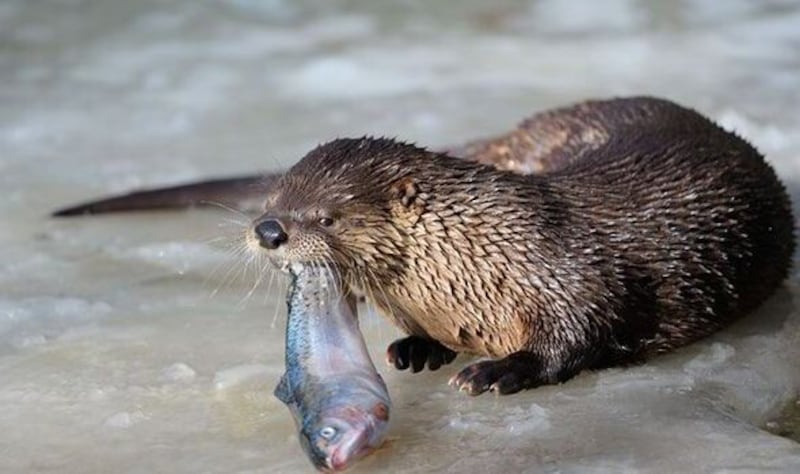
Otters occupy a range of aquatic habitats including streams, rivers, lakes and coastal waters, consuming prey such as fish, frogs, eels and water birds like coots and moorhens. With their slender, chocolate brown fur covered bodies, thick tapering tail, and webbed feet, they are well designed for life in water. Their ease of movement is aptly described by the Irish phrase ‘luibhín an mhadra uisce’ which translates as the ‘loops or twists and turns of the otter’, while hunting or playing. Irish names for the animal also reflect this aquatic lifestyle, such as ‘dobharchú meaning, ‘water hound’ and ‘madra uisce’ as ‘water dog’. The otter’s amphibious existence also means it frequently leaves signs of its presence on land such as tracks on mud alongside rivers and droppings or ‘spraints’ left on prominent mounds of nearby soil.
Given its ancient Irish origins, it’s not surprising the otter features in legends of old like Suibhne Geilt, where the mad King Sweeney insults Saint Ronan by throwing his psalter into a lake, only for it to be returned the next day by a friendly otter. The mammal gets a mention in the ancient Brehon Laws of Ireland, and we know otters were hunted for their highly prized skins as far back as the 12th century in Britain and the 15th century in Ireland, continuing as a so called ‘sport’ in later periods. This vile tradition of otter hunting was given greater public profile by the publication in 1927 of Henry Williamson’s novel, Tarka the Otter, which chronicles the life of an otter along its river habitat in North Devon and the continuous battles he has with his main enemy, the local otter hunt and the lead hound, Deadlock.
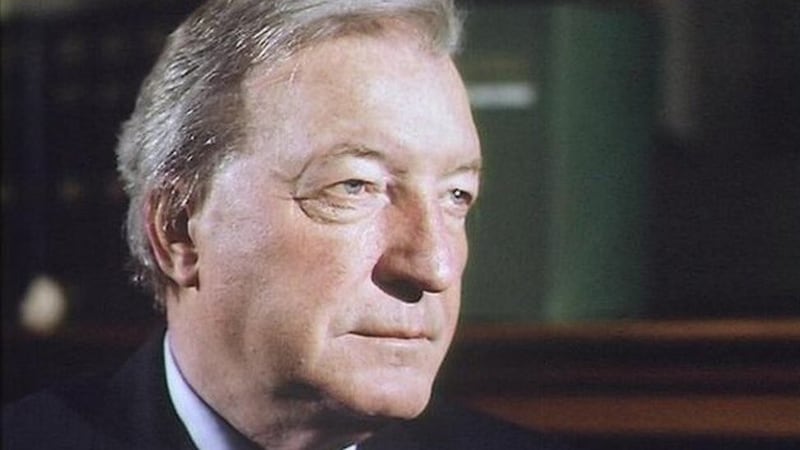
Thankfully, the otter is now fully protected by wildlife legislation throughout Ireland. I was interested to discover recently that State Papers released in December 2021 disclosed the then Taoiseach, Charles Haughey, in 1990 imposed a ban on otter hunting, by suspending the granting of licences to a small number of local hunts which were still involved in the practice. Soon after, it became a criminal offence to hunt or kill this long-time Irish resident.



